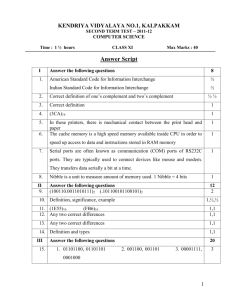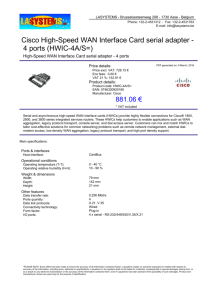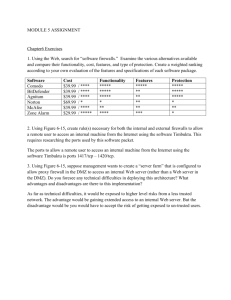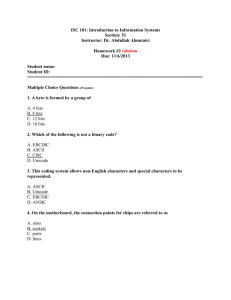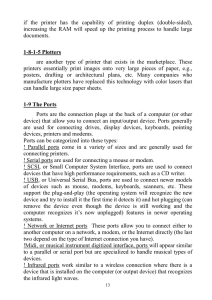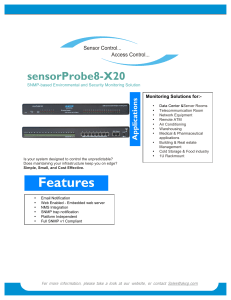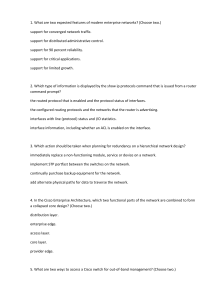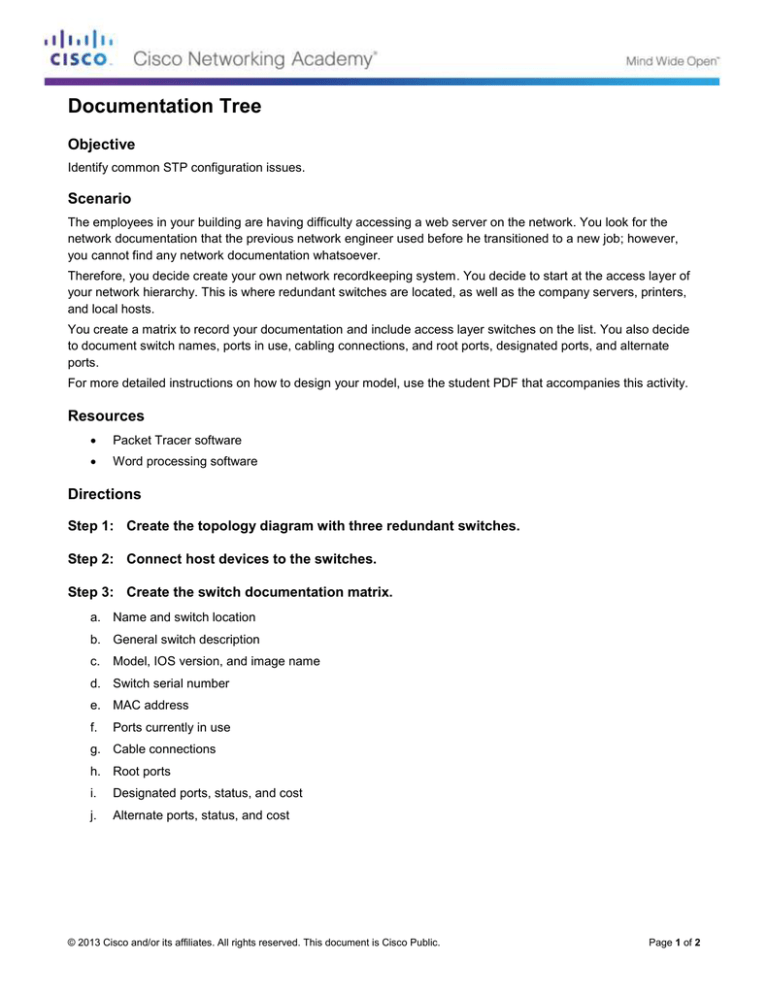
Documentation Tree
Objective
Identify common STP configuration issues.
Scenario
The employees in your building are having difficulty accessing a web server on the network. You look for the
network documentation that the previous network engineer used before he transitioned to a new job; however,
you cannot find any network documentation whatsoever.
Therefore, you decide create your own network recordkeeping system. You decide to start at the access layer of
your network hierarchy. This is where redundant switches are located, as well as the company servers, printers,
and local hosts.
You create a matrix to record your documentation and include access layer switches on the list. You also decide
to document switch names, ports in use, cabling connections, and root ports, designated ports, and alternate
ports.
For more detailed instructions on how to design your model, use the student PDF that accompanies this activity.
Resources
Packet Tracer software
Word processing software
Directions
Step 1: Create the topology diagram with three redundant switches.
Step 2: Connect host devices to the switches.
Step 3: Create the switch documentation matrix.
a. Name and switch location
b. General switch description
c.
Model, IOS version, and image name
d. Switch serial number
e. MAC address
f.
Ports currently in use
g. Cable connections
h. Root ports
i.
Designated ports, status, and cost
j.
Alternate ports, status, and cost
© 2013 Cisco and/or its affiliates. All rights reserved. This document is Cisco Public.
Page 1 of 2
Documentation Tree
Step 4: Use show commands to locate Layer 2 switch information.
a. show version
b. show cdp neighbors detail
c.
show spanning-tree
© 2013 Cisco and/or its affiliates. All rights reserved. This document is Cisco Public.
Page 2 of 2

